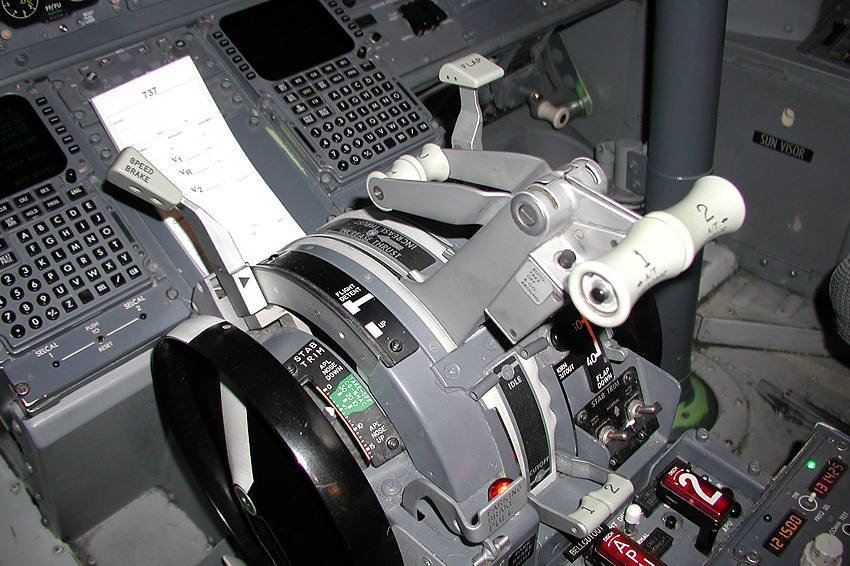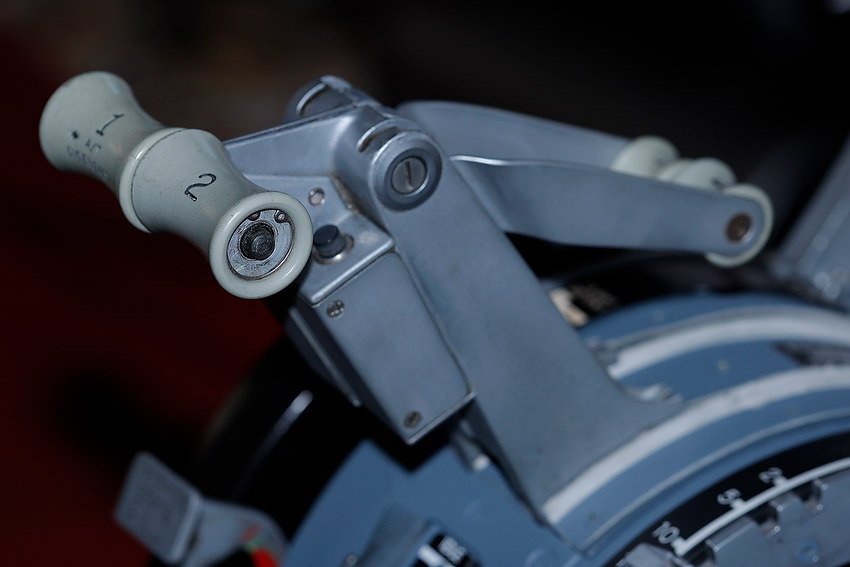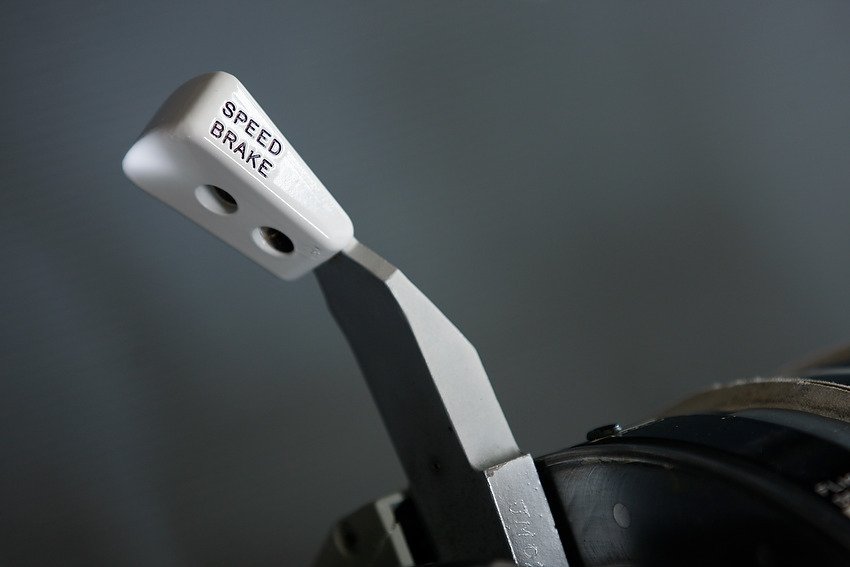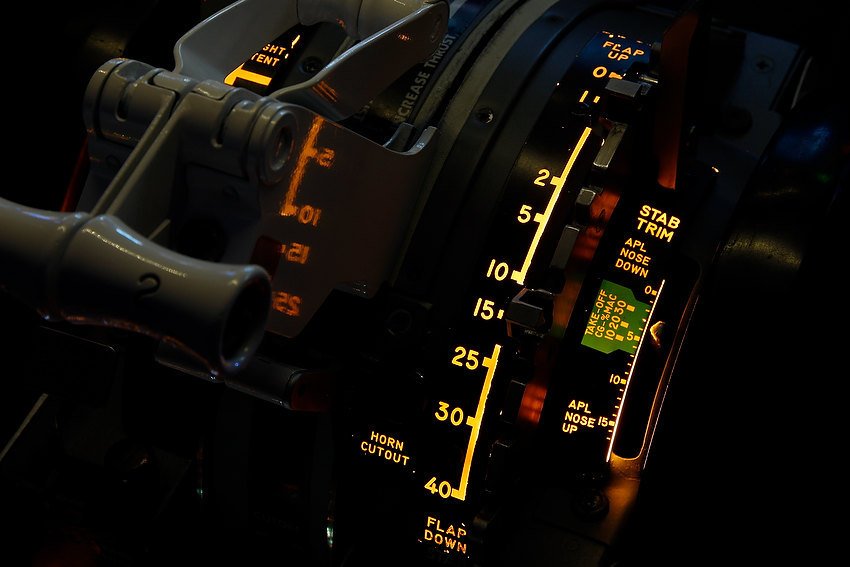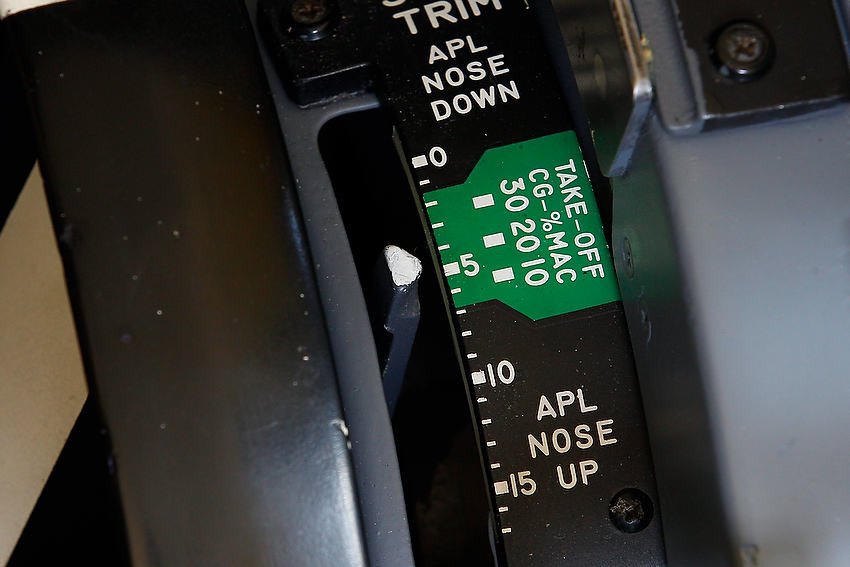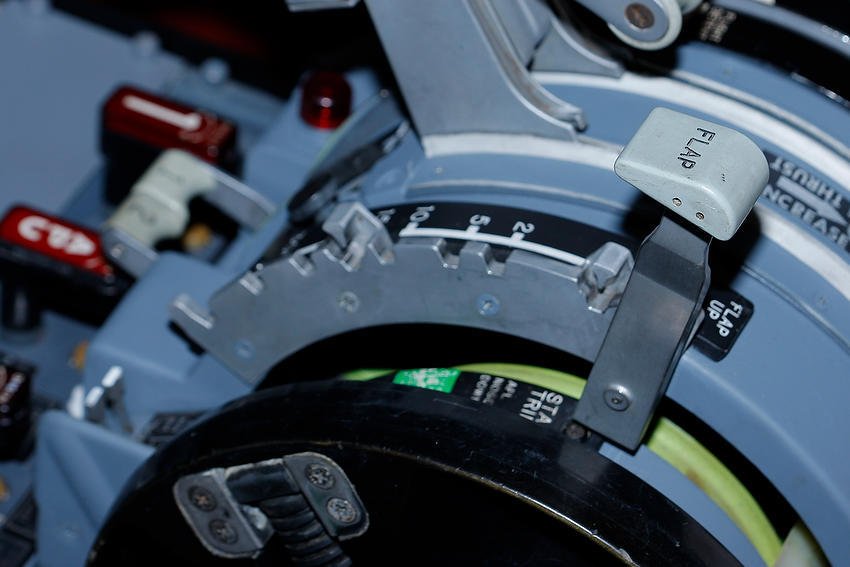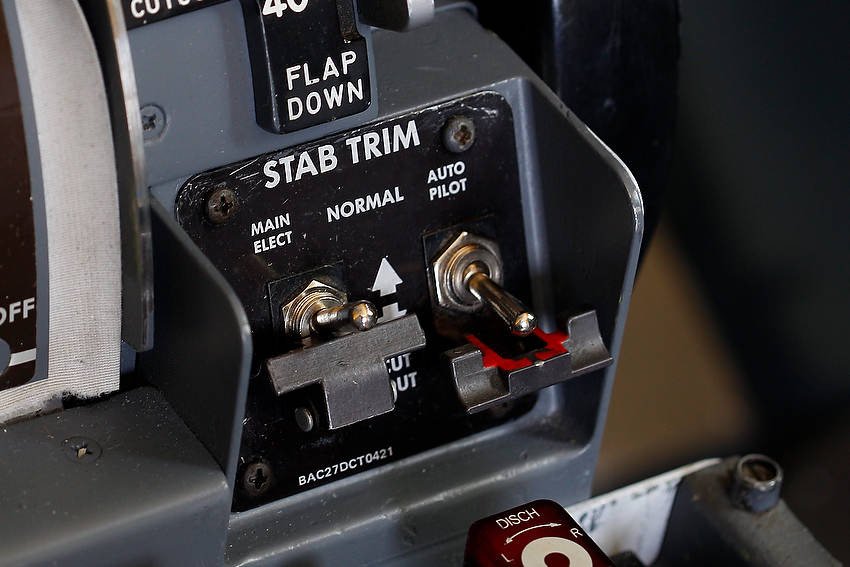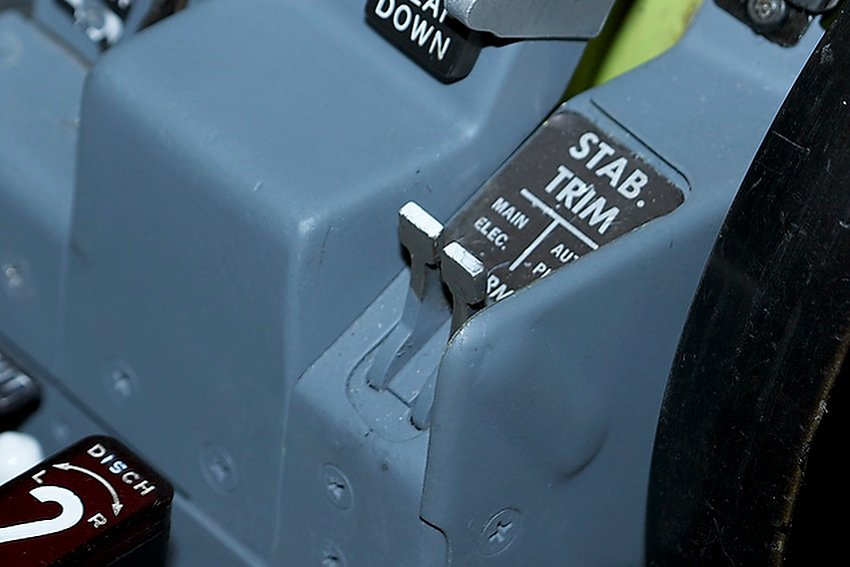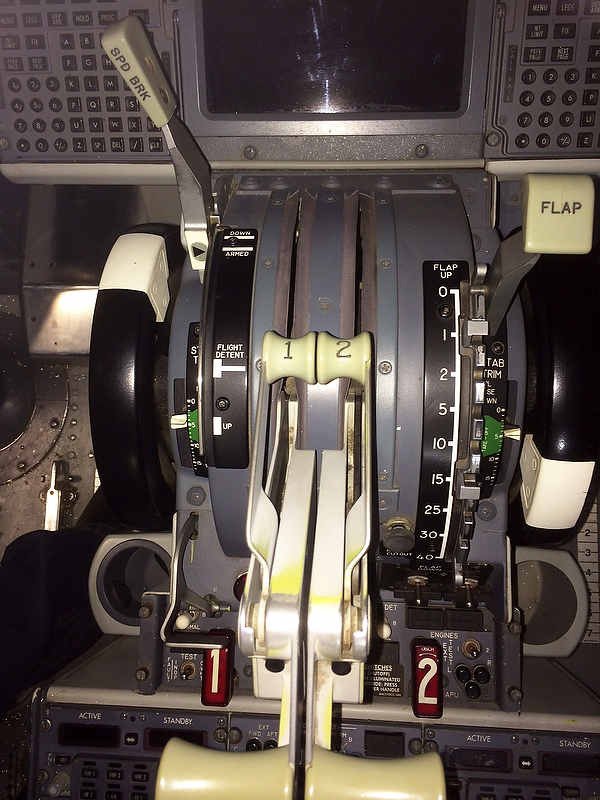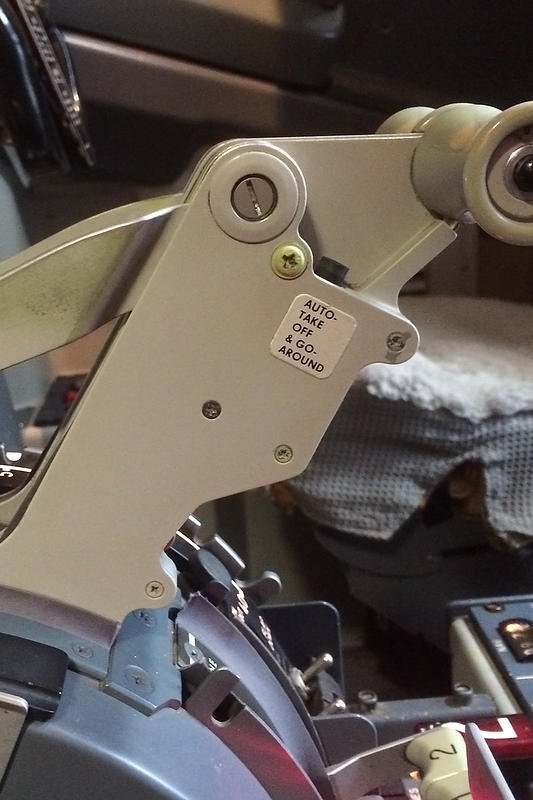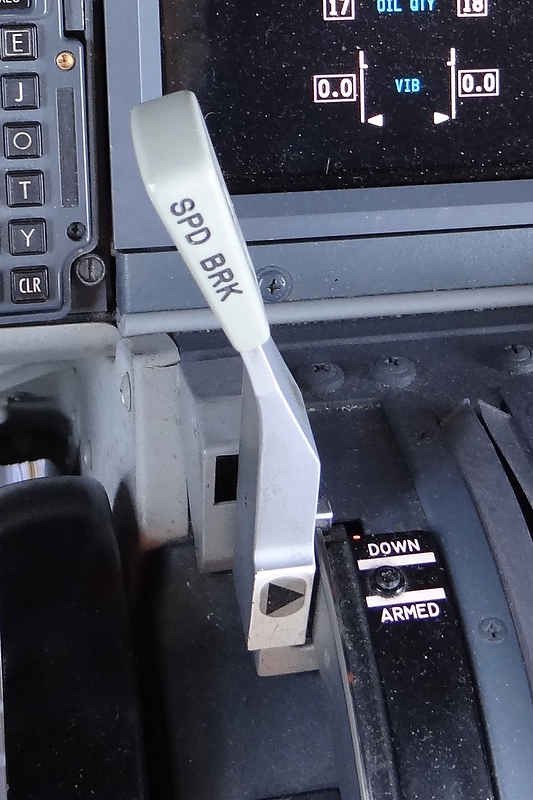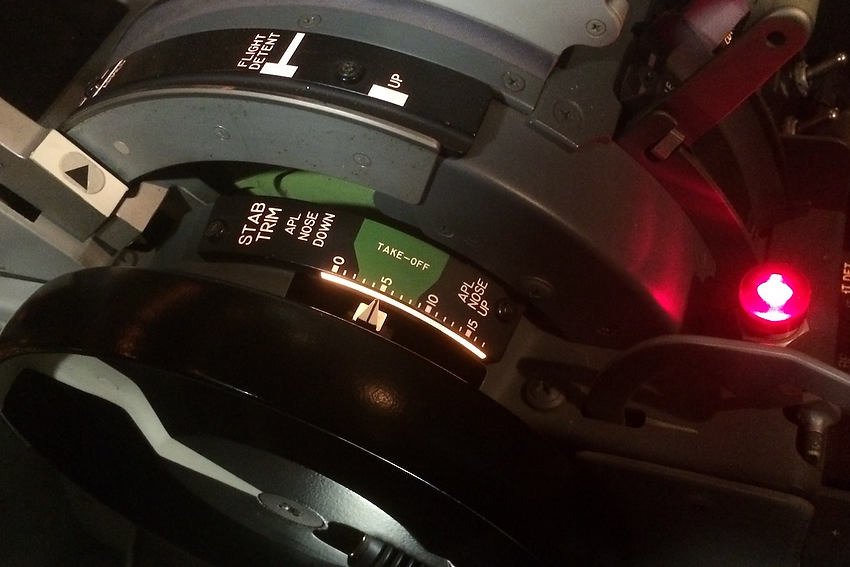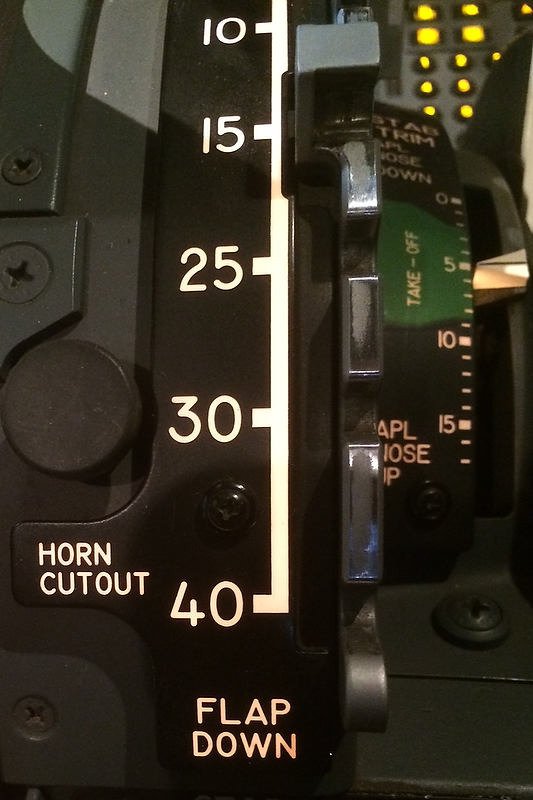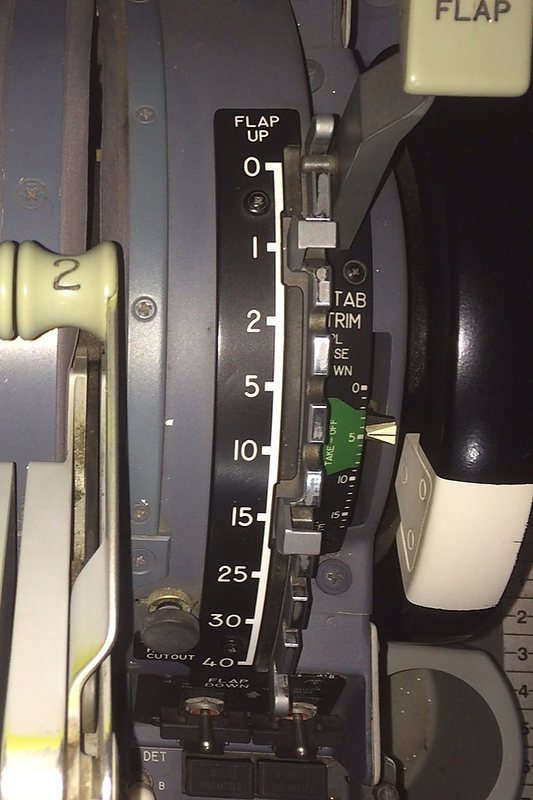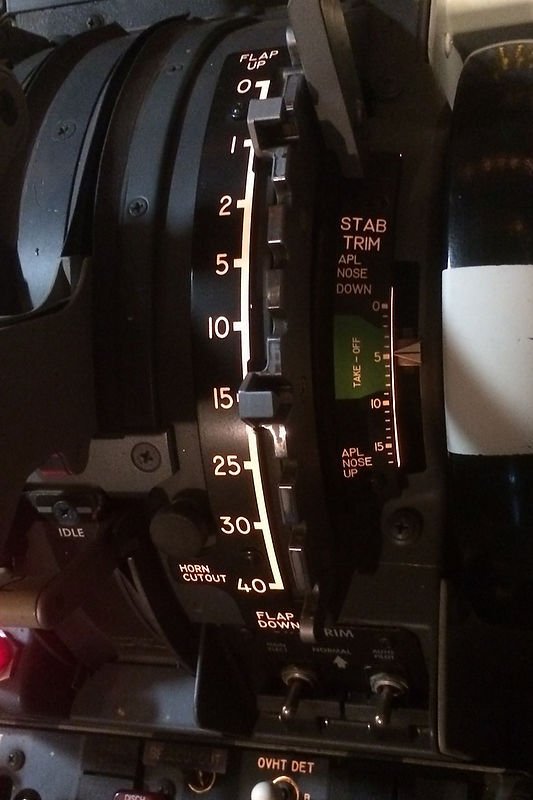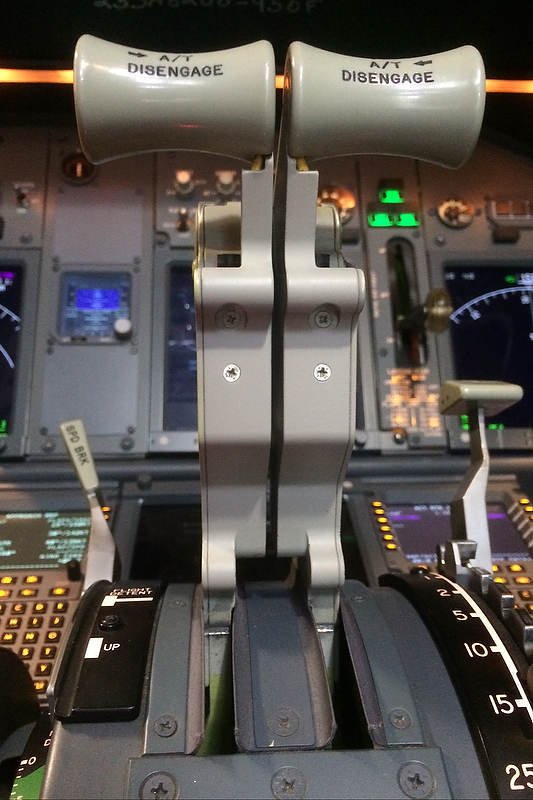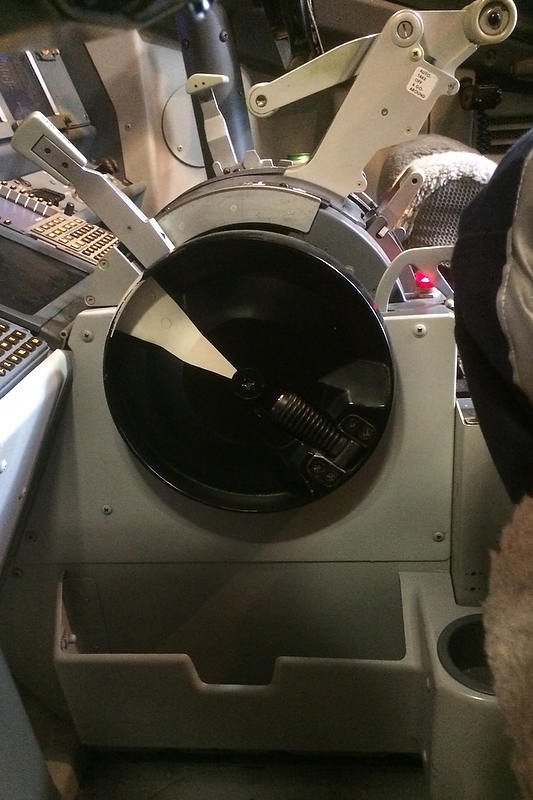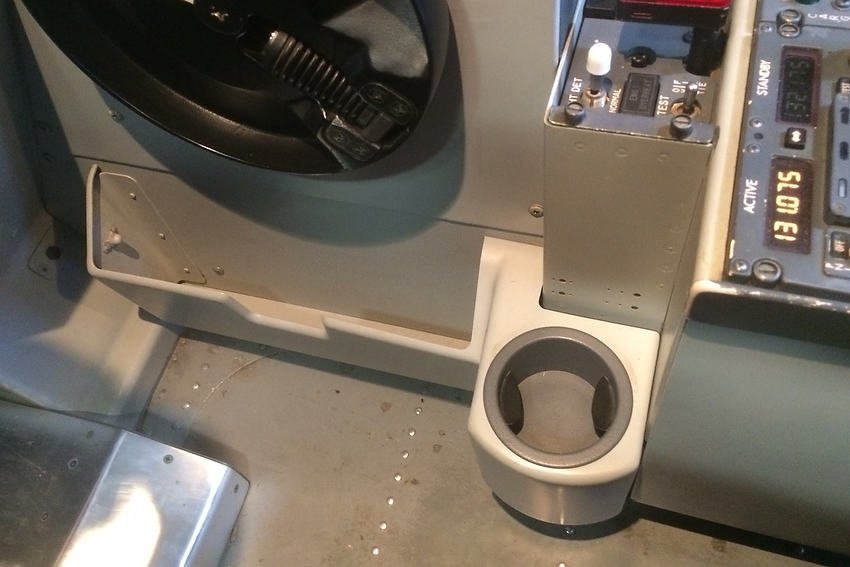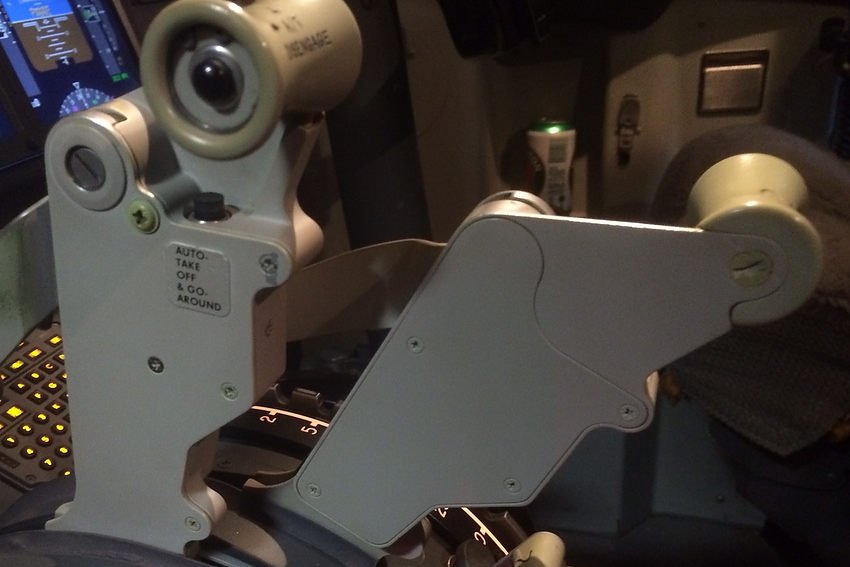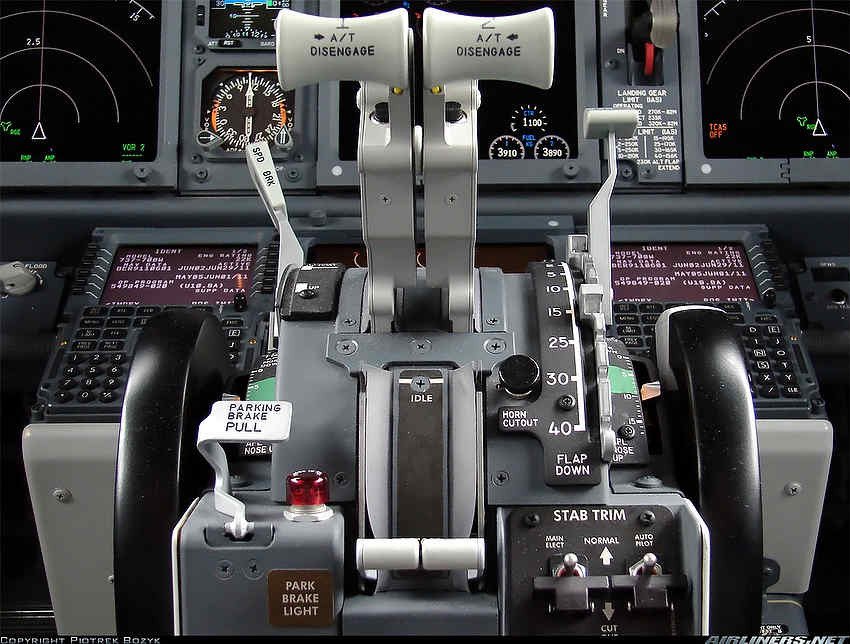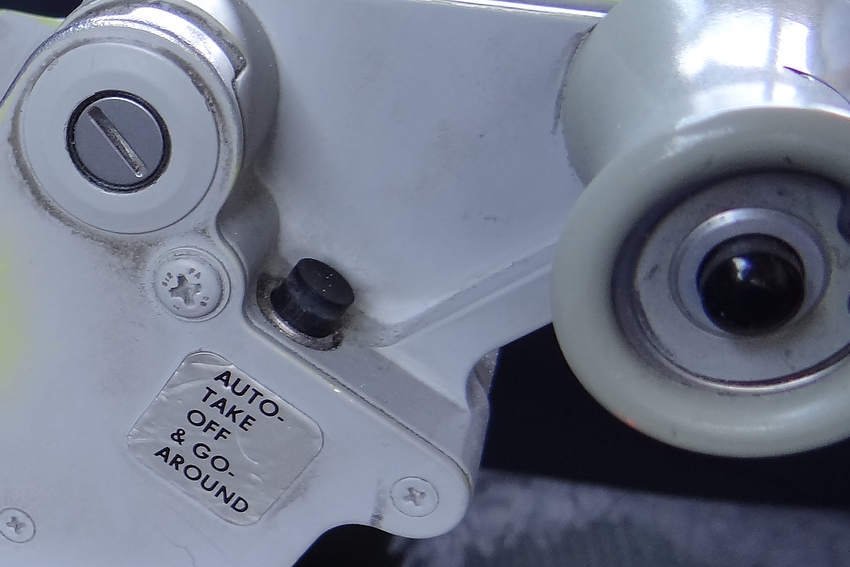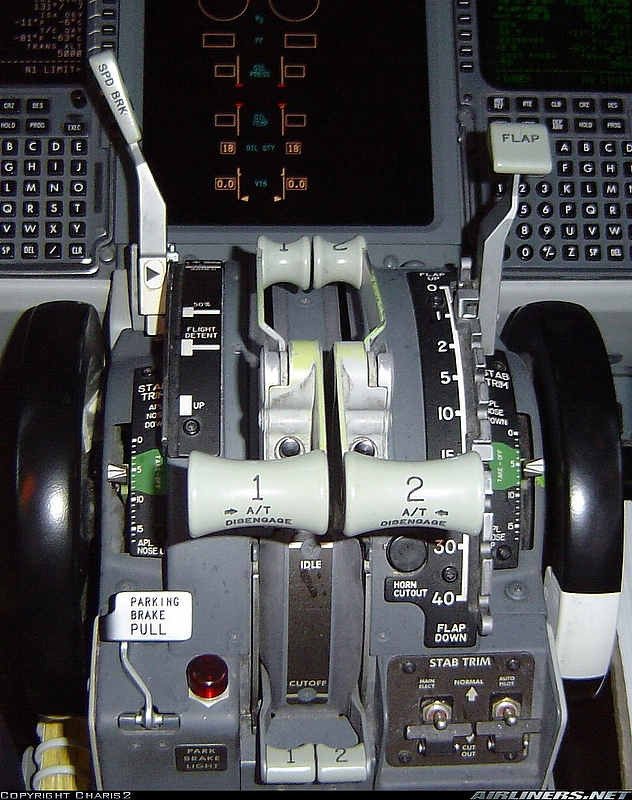Toe Brakes
In the real aircraft, the parking brakes can only be engaged or disengaged when the Captain-side or First Officer-side toe brakes are depressed. This mechanical system has been faithfully replicated by using a relay, micro-switch and actuator.
How It Works
The actuator will only engage when the toe brakes are depressed. This means that the parking brake cannot be engaged (lever locked in the UP position with red annunciator on) or disengaged (lever in DOWN position with red annunciator off) unless the toe brakes are depressed.
Depressing or releasing the toe brakes closes or opens the relay which in turn enables 12 volt power to reach the annunciator via the busbar. However, the system is only 'live' (closed system) when the parking brake lever is moved to the UP position, enabling power to flow unhindered through the circuit. When the toe brakes are released, the circuit is open and the actuator remains in the engaged locked position with the parking brake lever locked in the UP position.
To release the parking brake lever, the opposite occurs. When the toe brakes are depressed, the relay opens directing power to the actuator which disengaged the actuator lock. The parking brake lever is then pulled to the DOWN position by the tensile spring.
How To Engage The Parking Brake
The method used to engage the parking brake is as follows:
Slightly depress the toe brakes. This will open the relay and enable 12 volts to engage the actuator;
Raise the parking brake lever to the UP position and hold it in this position; and,
Release the toe brakes. Releasing pressure on the toe brakes causes the actuator to lock into the engaged position, as the power ceases to flow to the actuator.
To release the parking brake, the toe brakes are depressed. This will cause the actuator to unlock and return to its resting position. The high tensile spring will pull the parking brake lever to the DOWN position with a loud snapping sound.
More Ways To Skin A Cat - Full Mechanical or Part-Mechanical
There are several methods that can be used to connect the actuator to the parking brake mechanism. No one method is better than the other. I have outlined two methods.
(1) Mechanical Method: This has been described above.
The toe brakes are connected to a relay (via micro-switches, buttons or whatever) and then connected with a busbar/12 volts power source, micro switch, and finally the actuator.
Other than connection of the parking brake lever to an interface card, and registration of the movement of the parking brake lever (either in ProSim-AR, FSX, or via FSUIPC) this method requires minimal software.
(2) Part-mechanical/Software Controlled: This involves using the USER section in the configuration menu within ProSim-AR.
A Phidgets 0/0/8 relay card is connected to ProSim-AR and the the USER interface located in the configuration/switches menu of ProSim737 is programmed to read the movement for the toe brakes. In this example USER 1 has been selected. This process removes the need to install a micro-switch or button to the toe brakes.
Each USER IN has a corresponding USER OUT and this is located in GATES. Opening Configuration/Gates, the same USER number is found (USER 1). In the tab beside USER 1 the output from the Phidgets 0/8/8 card is entered. Therefore, whenever USER 1 is triggered, there will be a corresponding output.
When the toe brakes are depressed, the software will read the movement and send a signal to the Phidget card to engage the relay. This in turn will enable the busbar to be powered and the micro-switch to receive power. Whether the parking brake lever is engaged (UP) or disengaged (DOWN) will open or close the micro-switch (closing or opening the circuit).
The actuator will be engaged (circuit closed) only if the micro-switch (located on the vertical rod mentioned earlier) connection is severed (parking brake lever is in the raised position closing the circuit).
Actuator Power and Caution LED
The actuator, powered by 12 volts is connected to the 12 volt busbar in the Throttle Communication Module (TCM) and then, via a straight-through cable, to the Throttle Interface Module (TIM). The relay for the parking brake mechanism is located in the TIM.
The design of an actuator is such, that if power is continuously applied to the mechanism, it will burn out. If operating correctly, the actuator will onlt receive power when the toe brakes are depressed and the parking brake lever is raised at the same time.
To combat against the unforeseen event of power being continuously supplied to the actuator, for example by a relay that is stuck in the open (on) position, a coloured LED has been incorporated into the three LEDs that are fitted to the front of the Throttle Communication Module (TCM). This flashing purple coloured LED illuminates only when the circuit is closed and the actuator is receiving 12 volt power.
Important Point:
Any circuit which is not complete is considered an open circuit. Conversely, a circuit is considered to be a closed circuit when electricity flows from an energy source to the desired endpoint of the circuit.
Conversely, a closed relay means it allows voltage to travel through it, while an open relay is the opposite.
Additional Information
Like many things, there are several ways to accomplish the same or a similar task. The following posts located in the ProSim737 forum discuss the conversion of the parking brake lever.
This article is one of several pertaining to the conversion of the OEM Throttle Quadrant.
NOTE: Since publication, ProSim-AR has incorporated into their software a parking brake release 'command'. This by-passes the need to use the USER OUT settings mentioned above. The command is set to the output on the Phidget 0/0/8 card. The parking brake release can be found in the Configuration/Gates menu. (MORE TO COME - in construction).

